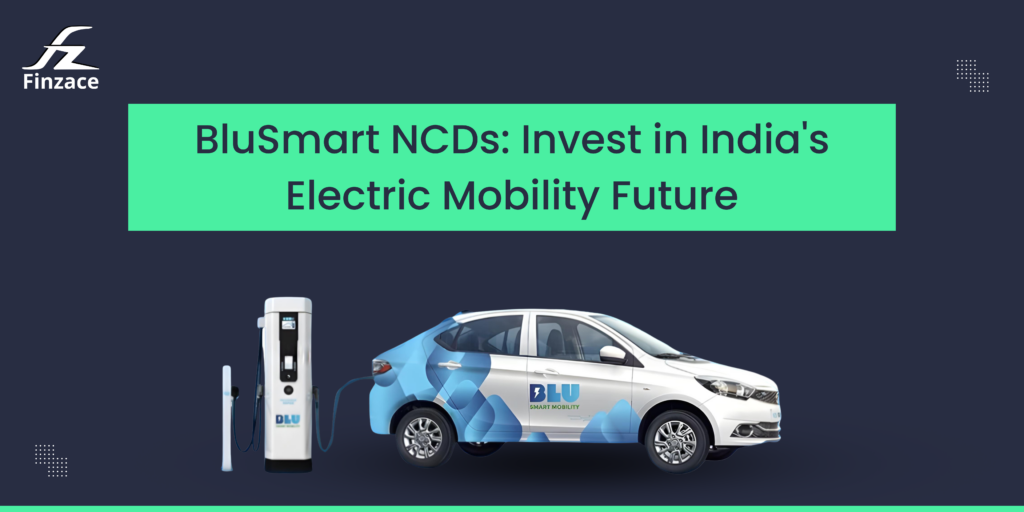Looking for a stable investment opportunity that also supports sustainable transportation? BluSmart’s latest Non-Convertible Debentures (NCDs) might be just what you’re searching for. Let’s break down why these NCDs are creating buzz in the investment community.
What Makes Blu Smart Special?
BluSmart isn’t just another mobility company. As India’s first all-electric ride-hailing platform, they’re revolutionising urban transportation. With operations in Delhi-NCR and Bangalore, they’ve already captured 40% of airport rides in these cities. Plus, their impressive 4.9/5 app rating shows they’re doing something right!
Understanding the NCD Offering
Here’s what you get when you invest in Blu Smart NCDs:
- A secure investment backed by company assets
- Short-term commitment of 12-14 months
- Monthly interest payments for steady income
- Fixed interest rates throughout the tenure
Let’s Talk Numbers: Understanding BluSmart’s Finances
Company’s Financial Position
Particulars | Unit | FY 24 | FY 23 |
Financial Performance | |||
Revenue | (₹ Cr.) | 166.2454 | 70.9072 |
Pat | (₹ Cr.) | -476.48 | -215.92 |
Capital Position | |||
Total Equity | (₹ Cr.) | -345.78 | -251.1 |
Long Term Borrowings | (₹ Cr.) | 555.76 | 628.46 |
Long Term Lease Liabilities | (₹ Cr.) | 805.630 | 594.72 |
Short Term Lease Liabilities | (₹ Cr.) | 142.57 | 109.59 |
Working Capital Position | |||
Inventories | (₹ Cr.) | 0.35 | NA |
Trade Receivables | (₹ Cr.) | 0.76 | 0.36 |
Trade Payables | (₹ Cr.) | 43.50 | 12.38 |
Cash & Cash Equivalents | (₹ Cr.) | 227.10 | 227.77 |
Key Financial Ratio | |||
Current Ratio | (Times) | 0.58 | 0.8 |
NA indicates Not Available.
- The Growth Investment Stage
- Currently, the company shows a negative total equity (-₹345.78 crores in FY24)
- Don’t worry! This is common for growing startups that are heavily investing in expansion
- Think of it like building a house – you spend a lot before you can start living in it
- How They’re Funding Growth
- Long-term loans: ₹555.76 crores
- Vehicle lease commitments:
- Long-term: ₹805.63 crores
- Short-term: ₹142.57 crores
- This shows they’re investing heavily in their fleet and infrastructure
Day-to-Day Business Health
- Cash Position
- Cash in hand: ₹227.10 crores
- This is stable compared to last year (₹227.77 crores)
- Shows they maintain healthy cash reserves for operations
- Business Operations
- Money owed by customers (Trade Receivables): ₹0.76 crores
- Up from ₹0.36 crores last year
- Shows good payment collection from customers
- Money owed to suppliers (Trade Payables): ₹43.50 crores
- Up from ₹12.38 crores last year
- Reflects expanding operations
- Small inventory of ₹0.35 crores
- Normal for a service business
- Money owed by customers (Trade Receivables): ₹0.76 crores
- Financial Health Indicator
- Current Ratio: 0.58 (down from 0.8 last year)
- In simple terms: For every ₹100 of short-term dues, they have ₹58 in quick assets
- While this might seem low, remember:
- They have steady monthly revenue
- Strong investor backing
- Regular funding support
Why These Numbers Make Sense
For a growing company like BluSmart:
- The negative equity is part of their growth strategy – they’re spending now to build a larger, more valuable business
- The high lease commitments show they’re rapidly expanding their fleet
- Stable cash reserves prove they can manage daily operations
- Strong revenue growth (135.85% from last year) shows the business model is working
Market Potential and Growth
The Indian cab service market is expected to reach ₹32,600 CR by 2029. Blu Smart’s position is strong because:
- They have 36 EV charging superhubs
- Government supports electric vehicles
- Electric cabs have lower running costs
- They’ve secured ₹1,650 crores in total funding
Who Should Invest?
These NCDs are good for:
- People looking for regular monthly income
- Those wanting short-term investment options
- Investors interested in supporting green initiatives
- Anyone looking to diversify their investment portfolio
The Bottom Line
BluSmart’s NCDs offer a unique opportunity to earn steady returns while supporting India’s move towards electric mobility. While their financial statements show they’re in investment mode (spending money to grow), they maintain strong cash reserves and have solid backing from investors.



